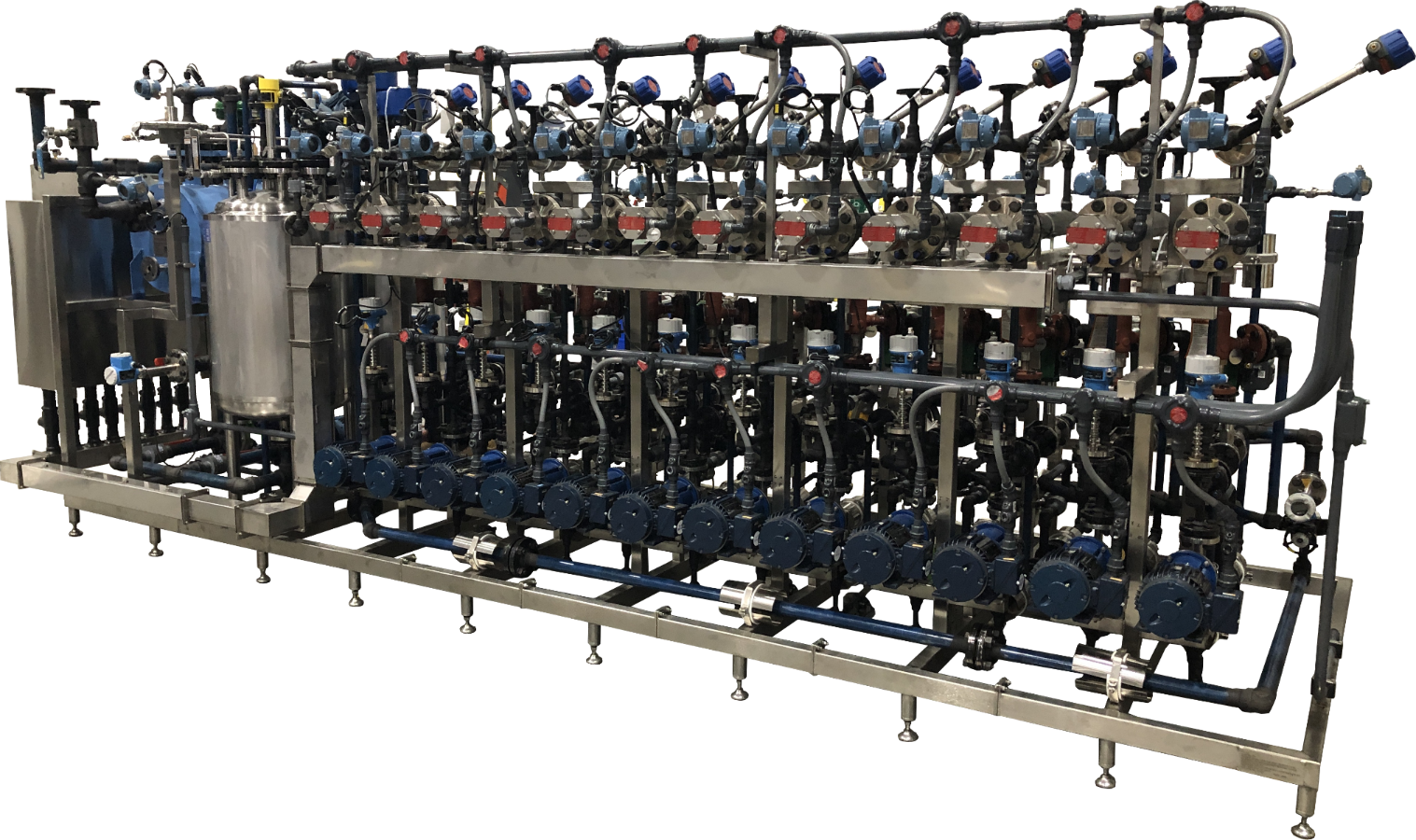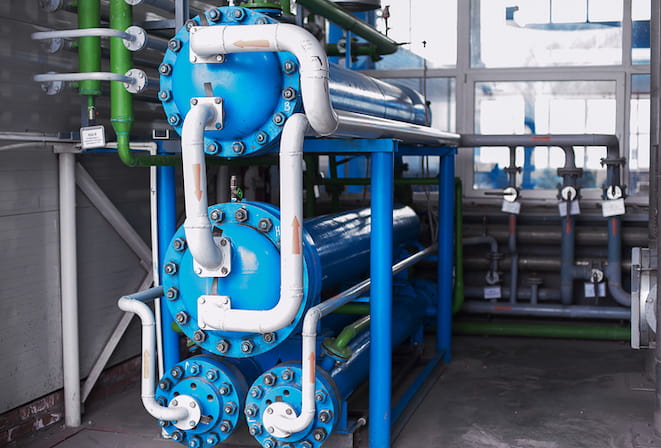Leveraging Machine Learning in DVS Heat Transfer Systems for Smarter Heat Regulation
Wiki Article
Exploring the Benefits and Applications of Heat Transfer Solutions in Modern Sector
Heat transfer systems play a vital duty in modern market. They encompass different mechanisms such as conduction, convection, and radiation, each contributing to reliable thermal management. Industries like manufacturing and aerospace advantage substantially from these systems. As advancements continue, the assimilation of ingenious products and modern technologies guarantees to boost power effectiveness. This advancement raises crucial questions about the future implications for sustainability and operational expenses throughout numerous sectors. What exists in advance in this continuous makeover?Understanding Heat Transfer Concepts
Heat transfer principles are basic to the operation of numerous industrial systems. These concepts encompass the mechanisms of conduction, radiation, and convection, each playing an essential role in taking care of thermal energy. Recognizing conduction entails evaluating just how Heat moves with solid materials, while convection concern Heat transfer in fluids, driven by liquid activity. Radiation, distinct from the other two, involves energy transfer via electromagnetic waves. The effectiveness of Heat transfer impacts system performance, energy intake, and overall efficiency. Reliable thermal management is necessary in processes such as home heating, Heat, and cooling recovery. By mastering these concepts, markets can maximize their operations, decrease power expenses, and improve equipment long life, thereby contributing to a much more lasting and effective industrial landscape.Key Types of Heat Transfer Solutions
While different markets use Heat transfer systems for varied applications, several essential types stand apart because of their certain features and performances. One of the most common types consist of convection, radiation, and transmission systems. Transmission systems transfer Heat with direct contact in between products, making them efficient in solid-state applications. Convection systems, on the other hand, use liquid activity to move Heat, appropriate for heating or cooling gases and liquids. Radiation systems operate without a tool, depending on electromagnetic waves to move Heat, perfect for high-temperature settings. Each type serves distinct objectives, enabling sectors to customize their Heat transfer solutions based upon functional demands, energy performance, and cost-effectiveness. Comprehending these systems is essential for maximizing efficiency in various commercial setups.Industrial Applications of Heat Transfer Technologies
The application of Heat transfer innovations in market plays a necessary function in boosting power efficiency and maximizing processes. DVS Heat Transfer Systems. By carrying out sophisticated Heat exchange systems, business can significantly reduce their ecological impact while boosting overall performance. This assimilation not just promotes sustainability but also lines up with modern regulative and customer demands for greener techniquesEnergy Performance Improvements
As industries significantly prioritize sustainability, power effectiveness renovations in Heat transfer modern technologies have come to be vital for decreasing functional costs and ecological impact. Improved Heat exchangers, as an example, utilize advanced products and designs to make the most of thermal efficiency while decreasing energy usage. Integrating variable speed drives in pumping systems enables for far better control of liquid circulation, leading to significant energy cost savings. The execution of wise sensing units and automation supplies real-time surveillance, enabling changes that enhance energy use. In addition, waste Heat healing systems catch excess thermal energy, converting it into useful power. These developments not just enhance power efficiency however likewise add to a more sustainable industrial landscape by decreasing greenhouse gas discharges and sustaining compliance with ecological guidelines.Refine Optimization Techniques
Process optimization techniques are vital in enhancing the efficiency and efficiency of Heat transfer modern technologies in commercial applications. These strategies involve refining procedures to take full advantage of Heat transfer efficiency while reducing power usage and operational prices. Methods such as computational fluid characteristics (CFD) modeling enable designers to examine and imitate Heat transfer situations, recognizing locations for enhancement. Additionally, real-time surveillance systems can supply important information on temperature level gradients and circulation prices, allowing adjustments that maximize performance. Executing advanced control methods, such as anticipating analytics, can improve system responsiveness to differing operational needs. By applying these optimization strategies, markets can attain higher thermal efficiency, decreased downtime, and boosted product top quality, eventually bring about enhanced competition in the marketplace.
Ecological Impact Reduction
While commercial Heat transfer modern technologies are important for operational effectiveness, their application likewise provides possibilities for considerable environmental impact decrease. By boosting energy efficiency, these systems decrease gas intake, resulting in lower greenhouse gas exhausts. Advanced Heat exchangers can recuperate waste Heat, rerouting it to preheat incoming fluids, thus minimizing energy requirements. In enhancement, the assimilation of Heat transfer technologies in renewable resource systems, such as solar thermal and geothermal applications, sustains the change to lasting practices. Industries that utilize these innovations additionally gain from lowered functional prices and boosted regulatory conformity. Generally, the tactical application of Heat transfer systems not only reinforces efficiency however likewise promotes a much more sustainable industrial landscape, contributing to worldwide environmental goals.Advantages of Efficient Heat Transfer Equipments
Effective Heat transfer systems supply significant benefits in modern-day sector, mostly with improved energy efficiency and price reduction. By optimizing thermal monitoring, these systems decrease power waste, causing lower operational costs (DVS Heat Transfer Systems). Companies can accomplish higher sustainability and boosted productivity.
Energy Performance Improvements
As industries increasingly prioritize sustainability and cost-effectiveness, energy effectiveness enhancements in Heat transfer systems have actually become a vital emphasis. Improved effectiveness in these systems brings about lowered power intake, making it possible for centers to run more sustainably. By maximizing Heat transfer approaches, sectors can minimize waste Heat and attain far better thermal monitoring, greatly lowering their ecological influence. Breakthroughs in modern technologies such as Heat exchangers and insulation products add to enhanced performance and reliability. Implementing energy-efficient Heat transfer solutions not just supports conformity with governing requirements but additionally fosters a society of advancement within organizations. Ultimately, these renovations are necessary in lining up industrial procedures with global power conservation objectives, leading the way for an extra sustainable future in production and processing sectors.Price Reduction Opportunities
By maximizing Heat transfer systems, sectors can expose substantial expense decrease chances that boost their bottom line. Efficient Heat transfer lowers power usage, Resources resulting in lower energy bills and decreasing operational expenditures. Additionally, enhanced system efficiency lowers the need for repair and maintenance, furthermore conserving expenses in time. Enhanced Heat transfer can likewise expand equipment lifespan, enabling firms to delay funding expenses on replacements. Additionally, waste Heat recuperation systems can transform excess Heat right into usable power, further driving down costs. These systems not only improve procedures yet also add to sustainability initiatives, positioning companies favorably in a progressively eco-conscious market. In general, the monetary benefits of effective Heat transfer systems are substantial and vital for competitive advantage.Developments in Heat Transfer Solutions
Exactly how can contemporary market improve its procedures via cutting-edge Heat transfer options? By taking on innovative materials and modern technologies, sectors can significantly boost thermal effectiveness and performance. Developments such as nanofluids, which boost Heat transfer capacities past conventional fluids, and phase change materials that keep and release thermal energy, are gaining traction. In addition, the integration of wise sensing units and IoT devices enables real-time monitoring and optimization of Heat transfer processes, decreasing waste and improving system responsiveness. Moreover, additive production methods enable the production of more intricate Heat exchangers that make the most of area while minimizing product use. Jointly, these developments drive functional efficiency and produce competitive benefits in different sectors, including aerospace, manufacturing, and power.The Function of Heat Transfer in Sustainability Efforts
While the promote sustainability proceeds to reshape sectors, the duty of Heat transfer modern technologies becomes increasingly essential in attaining environmental goals. Reliable Heat transfer systems promote power efficiency by optimizing thermal monitoring in numerous processes, considerably reducing energy intake and greenhouse gas emissions. Progressed Heat exchangers are utilized in industrial applications to recover waste Heat, thus minimizing energy waste. Furthermore, innovations such as phase change products boost thermal storage, adding to renewable resource integration. Moreover, the fostering of sustainable liquids in Heat transfer systems can lower ecological impact. By prioritizing effective Heat transfer, industries not only boost functional efficiency however also straighten with worldwide sustainability efforts, promoting a cleaner, much more sustainable future.Often Asked Questions
Exactly How Do Heat Transfer Systems Impact Energy Costs in Manufacturing?
Heat transfer systems noticeably influence energy expenses in production by boosting performance, lowering waste, and maximizing thermal administration. These enhancements result in decrease operational costs, inevitably benefiting overall performance and profitability in industrial procedures.What Upkeep Is Required for Heat Transfer Equipments?
Upkeep for Heat transfer systems consists of normal assessments, cleaning of parts, examining liquid degrees and problems, replacing used components, and guaranteeing proper anchor insulation. These activities improve effectiveness, expand life-span, and protect against pricey break downs in operation.Exist Safety And Security Worry About Heat Transfer Equipments?
Security interest in Heat transfer systems consist of prospective leakages, pressure accumulation, and thermal hazards. Appropriate layout, regular maintenance, and adherence to safety and security protocols are vital to alleviate these risks and assure risk-free procedure in industrial atmospheres.
Just How Can I Choose the Right Heat Transfer System for My Service?
Picking the right Heat transfer system involves examining elements such as effectiveness, application demands, budget restrictions, and security criteria. A complete evaluation of these components will help guarantee suitable efficiency and integrity in from this source company procedures.What Are Usual Failures in Heat Transfer Equipments and Their Causes?

Recognizing conduction entails examining how Heat moves with solid products, while convection pertains to Heat transfer in fluids, driven by liquid motion. By maximizing Heat transfer methods, markets can decrease waste Heat and achieve much better thermal monitoring, greatly reducing their ecological impact. Waste Heat recuperation systems can transform excess Heat into functional power, better driving down prices. Advanced Heat exchangers are utilized in industrial applications to recover waste Heat, thereby minimizing power waste. Common failures in Heat transfer systems include leaks, rust, and ineffective Heat exchange.
Report this wiki page